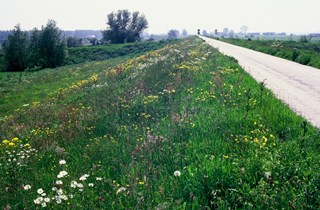Discovering 'piping' with geophysical methodologies
Monitoring levees in the Netherlands
In The Netherlands, local water boards are hold responsible for the management of river embankments, the so-called river dikes. Water board Rivierenland is accountable for administrating, controlling and maintaining many kilometres of river dikes. Dike stability is crucial for Dutch people’s safety because large areas are located below surface water level. To safeguard the safety levels, Water board Rivierenland has performed research into the functioning of eroding boils in dikes. The use of innovative techniques in this research has provided a wealth of knowledge.
At two sites, Gorinchem and Zaltbommel, geophysical, GIS and hydrogeological analyses were used to determine the risks of cracking. The results point out that, amongst others, the presence of peat and sandy layers are determinant for cracking mechanisms to occur during periods of high water. When dikes crack the hydraulic conductance of the soil top layer is reduced, augmenting the probability of boils and pipes developing in the dike.
This extensive analysis on dike stability served various goals. First, and foremost, it provided in-depth knowledge on the functioning of eroding boils. The insights provide a framework which is highly useful for assessing dike stability, thereby enhancing safety levels. In addition, the study allowed for the development of many innovative research methods.
 Rivierdijk zaltbommel
Rivierdijk zaltbommel